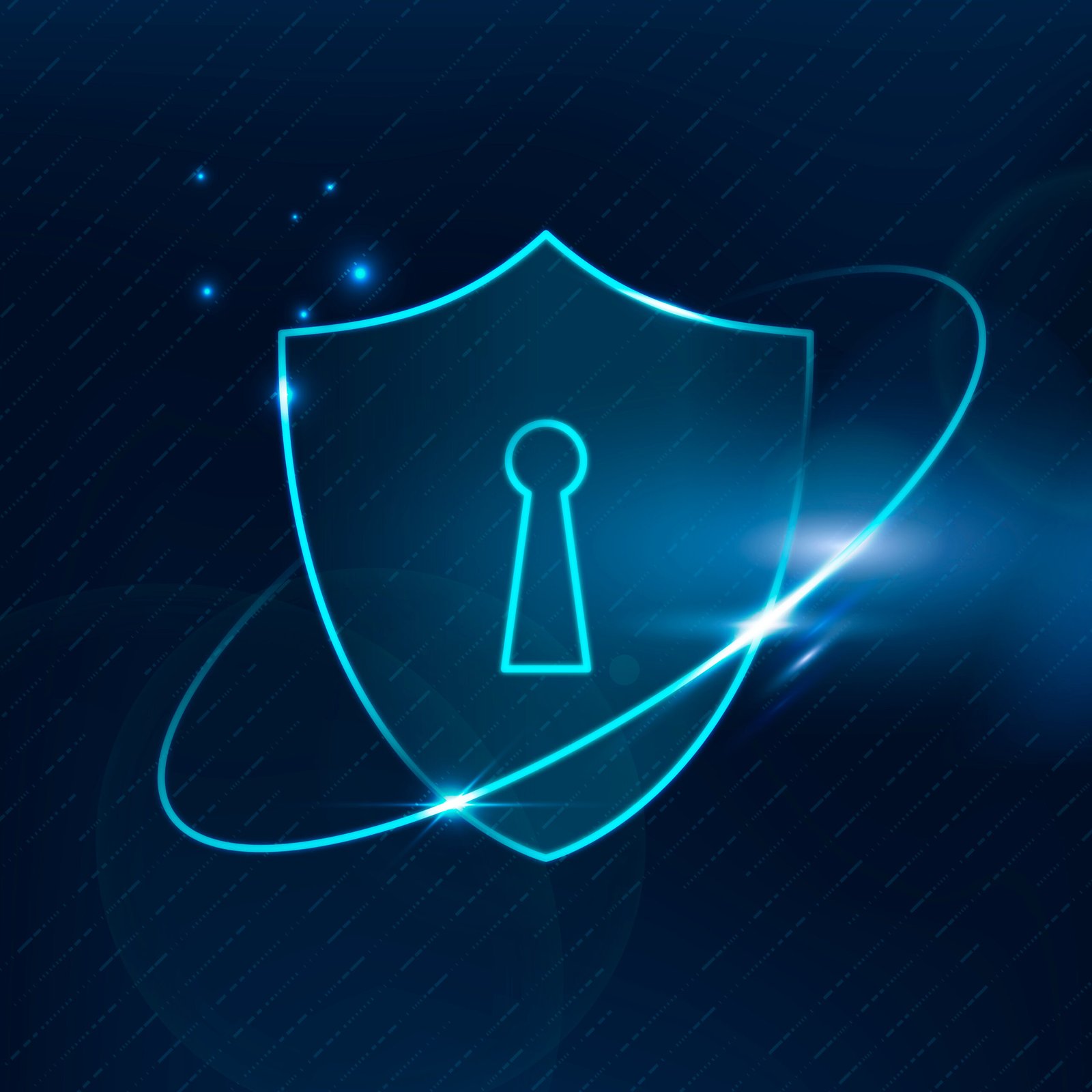
LiFi Integration: Elevate Internet Security Standards in Your Organization
Elevate your organization's internet security standards with cutting-edge LiFi integration. Experience secure, fast, and reliable communication solutions.

As businesses grow to integrate with the modern world, communication becomes an important aspect of their expansion. Whether it is internal communication, data sharing, workflow management, or marketing and retail operations; secure and reliable internet is crucial for ensuring the success of an organization. Present-day organizations are heavily reliant on traditional WiFi for meeting most of their communication needs.
Although WiFi has proved to be effective in providing a consistent mode of communication to millions of people across the world, it comes with its own set of shortcomings. Furthermore, the growing over-reliance of most communication devices on radio waves has led to a drop in connection quality over time due to network congestion and high chances of interception. This is where LiFi technology enters as a breath of fresh air for modern communication infrastructure.Faster, stabler, and highly secure in comparison to traditional internet, LiFi is set to change the face of organizational communication infrastructure forever.
If you are considering the possibility of using LiFi technology to elevate your organization’s internet security standards, there is a lot you need to know. What are the security implications of LiFi? How is LiFi more secure than WiFi? How does LiFi help organizations? Read on to find in-depth answers to all these questions and more.
Understanding LiFi Technology in Organizational Context
LiFi or light fidelity is a bidirectional wireless communication technology that uses optical signals to transmit data. Founded in 2011 by Prof. Harald Haas and further developed by researchers in the French University of Paris-Saclay, LiFi utilizes the light communication system to create high-speed internet connections. The most commonly known version of LiFi uses LED bulbs to transmit data as invisible or infrared light to nearby receivers. These bulbs transfer data in the form of high-frequency light pulses which transmit data within a pre-determined coverage area.
LiFi technology can be utilized by modern-day organizations to improve connectivity and operational efficiency. Here are some key benefits to organizations that make LiFi a part of their network infrastructure:
- Low Latency in Data Transmission
LiFi relies on the light spectrum to carry data across its network. As light signals are higher in frequency than other electromagnetic waves, they provide higher bandwidth and lower latency in data transmission. As a result, LiFi can increase the volume and speed of data transfer within an organization.
- Internet Security
The inherent physical characteristics of light signals make them a highly secure mode of data transmission. Light waves cannot pass through opaque walls or furniture, and stay limited within a pre-defined coverage area. As a result, there is a reduced risk of interception from unauthorized users located outside the coverage zone of a given network.
- Integration with IoT
LiFi technology can foster efficient communication between interconnected devices in smart offices, manufacturing plants, and training institutions. Light signals do not face any interference from electromagnetic waves in their surroundings, resulting in a seamless performance of LiFi networks in busy or dense environments. LiFi technology is ideal for powering Internet of Things (IoT) networks in complex organizational settings.

Comparing Security Implications of LiFi vs WiFi
The security features of a communication technology play an important role in determining its overall reliability and popularity among users. Wireless technologies such as WiFi and LiFi use common protocols to facilitate secure data transfer within their networks. These include the application of data encryption protocols, using VPNs, and protecting network access with strong passwords and two-factor authentication.
However, some key differences between WiFi and LiFi technology affect the quality of network security they can provide. These are:
| Features | LiFi | WiFi |
|---|---|---|
| Technology | Wireless optical signals | Wireless radio signals |
| Data transfer speed | Approx. 2 Gbps | Approx.150 Mbps, but varies according to quality of local network and signal density |
| Compliance Standard | IEEE 802.11bb and IEEE802.15.7 | IEEE 802.11 |
| Coverage Zone | Extends about 30 sq meters. | Effective over 45 meter radius. |
| Security | Higher Security | Lower security |
| Bandwidth | High/unlimited bandwidth | Limited bandwidth |
| Power Consumption | Low electricity consumption | High electricity consumption |
| Interference | Not susceptible to electromagnetic interference | Highly prone to electromagnetic interference |
| Environment Suitability | Effective in high-density environments | Less effective in dense environments |
| Installation | Quick and easy to install | Easy to install |
Transforming Network Infrastructure with LiFi Integration
LiFi can change the network infrastructure within organizations by doing away with dependence on heavy cables, expensive hardware, and complex deployment problems that are common with traditional internet technologies such as WiFi and 5G. As institutions and public spaces do away with their reliance on WiFi for establishing internet connections, we can expect faster integration of LiFi into modern communication systems. Here are some key ways in which LiFi integration can transform network infrastructure:
Improved Real-Time Communication
LiFi technology can provide a highly stable internet connection in fast-paced modern settings such as smart roads, offices, educational institutions, and medical facilities. Enhanced real-time connectivity would imply greater communication efficiency for volatile and high-risk sectors like defence, disaster management, and manufacturing. A reliable wireless communication system will also prove useful in sectors such as underwater navigation, aerospace, and geo-location.
Enhanced Security
The security and data privacy provided by LiFi technology can greatly improve the integrity of organizational networks. As modern institutions and businesses grow to value data security in their operations, the availability of secure networking tools becomes more crucial day by day.Integration of light-based communication can provide better network protection for internet users and reduce the frequency of cybercrimes across the globe.
Power Saving
LiFi relies on a simple LED bulb to transmit data across its network. Integrating LiFi technology into secure community networks and homes will have power-saving benefits over time. This is because LiFi networks are built upon light equipment which does not consume much electricity to function. As LiFi technology offers a wider range and higher bandwidth of internet connectivity with lower energy consumption, it can be considered an eco-friendly alternative to WiFi.
Quick Integration
LiFi technology is quick and easy to install as it relies on simple equipment that can easily be integrated into existing infrastructure. Unlike traditional internet connections, LiFi does not require any wire installation or heavy hardware setups during deployment. The core components of any LiFi network include LED bulbs, access points, and LiFi-enabled receiving devices. This helps LiFi technology to provide highly customizable connectivity solutions for modern environments. Additionally, LiFi’s ability to operate alongside other devices and connections makes it useful for providing reliable connectivity in diverse settings.
Fortifying Organizational Security with LiFi
LiFi technology can provide secure and dependable networking infrastructure for organizations that prioritize internet security. Here is how LiFi can be used to fortify organizational security:
Secure Indoor Communication
The introduction of LiFi networks within an organization’s communication system can improve the security and reliability of data transmission. As light signals cannot be intercepted outside their designated coverage zones, LiFi can help in building a secure community network for internal communication within an organization. This ensures that sensitive data and records circulating within a private network stay protected from unauthorized access or eavesdropping.
Isolation from External Networks
Unlike traditional WiFi networks, LiFi connections can be limited and directed to connect to specific devices within their coverage range. This allows organizations to create isolated communication channels for separate applications or departments that can exist alongside traditional networks. As a result, the integration of LiFi technology can improve departmental security by minimizing the exposure of internal networks to external threats or data breaches.
Improved Precision
With LiFi technology, it is possible to direct data-carrying signals at specific devices. This type of precision is not possible with WiFi as radio waves transmit data in all directions, making it hard to restrict which devices can join a given network. This ability of LiFi to provide pinpointed connections means that organizations can control which device can access a particular network. As a result, LiFi allows for an “intentional” approach to network design, which can be extremely useful for managing highly confidential or restricted information.
Addressing Organizational Concerns and Considerations
As LiFi is a new technology that remains in its early stage of development, modern organizations have some common concerns associated with LiFi adoption. These include:
Standardization
A common concern for organizations adapting LiFi into their communication networks is a lack of clarity about standardizations and the trustworthiness of available devices. Since LiFi is a developing technology that is still new to the market, consumers might face difficulties in finding compatible products that integrate easily with pre-existing networks. To resolve this concern, LiFi companies such as Oledcomm are actively engaged in finalizing standardized protocols to improve the adaptability of their LiFi-enabled products. Currently, LiFi-based devices are governed by the IEEE 208.11bb standard which provides a global framework for deployment of optical communication networks.
Cost of Integration
Integrating LiFi technology into existing infrastructure requires investments in new equipment, LiFi-enabled devices, and labor. This means that organizations might need to spend resources for the initial installation and deployment of LiFi into their network infrastructure. However, on the brighter side, LiFi technology is guaranteed to bring power and cost-saving benefits in the long run. Compared to traditional networks, LiFi is a lighter and more eco-friendly technology that is cheaper to maintain over time.
Limited Range
Since LiFi signals are confined to a pre-specified zone, they might provide a limited range of coverage when compared to traditional wireless technologies. To solve this problem, organizations might have to alter their existing infrastructure before they can successfully integrate LiFi technology into their communication networks. Oledcomm devices can overcome this limitation by employing mesh networking architecture to create interconnected communication nodes that enhance the LiFi coverage area.
Elevate your Organisation’s Internet Security With Oledcomm LiFi
Internet security is a crucial part of running a successful organization. As advanced communication systems usher in a culture of real-time data sharing in workplaces, secure networking has become a necessity for modern institutions. WiFi Internet has been the default mode of communication for most big organizations in the past two decades. However, the advent of LiFi technology in 2012 brought a new era of secure networking with an emphasis on better connection stability and security.
Over the last decade, Oledcomm LiFi has played a critical role in the manufacturing and distribution of custom LiFi solutions for a wider market. In an attempt to democratize LiFi technology, Oledcomm has focused on building affordable LiFi products for modern-day businesses and private users across the globe. If you want to experience the advanced security and reliability of LiFi-based networks for your organization, contact Oledcomm today!
Utilizing light signals, LiFi offers a reduced risk of interception due to its inability to pass through opaque obstacles, limiting transmission range. Immune to electromagnetic interference, LiFi ensures stable connections, safeguarding against external disruptions. Its line-of-sight communication adds an extra layer of security, making unauthorized access challenging outside coverage zones.
LiFi surpasses WiFi in security due to various characteristics. Light waves, unable to penetrate solid objects, restrict transmission to predefined areas, thwarting interception. Its reliance on line-of-sight communication deters unauthorized access. Additionally, LiFi’s immunity to electromagnetic interference fortifies network stability, offering a highly secure communication environment for organizations.
Yes, LiFi technology is safe for organizational use. LiFi’s enhanced security features, such as restricted transmission range and immunity to electromagnetic interference, ensure safe and reliable communication within organizational settings.
LiFi presents a significant challenge for hackers compared to WiFi. Its limited transmission range and requirement for line-of-sight communication make unauthorized access difficult. Additionally, LiFi’s immunity to electromagnetic interference enhances network security, offering a robust defense against hacking attempts, thereby making it a highly secure option for organizations.
LiFi technology offers numerous benefits for organizations. It provides enhanced security through a restricted transmission range and immunity to electromagnetic interference, ensuring reliable communication. With low latency and integration with IoT, LiFi facilitates efficient operations. Its power-saving nature and quick integration further contribute to its appeal.
Recent articles

Categories
See some more...




